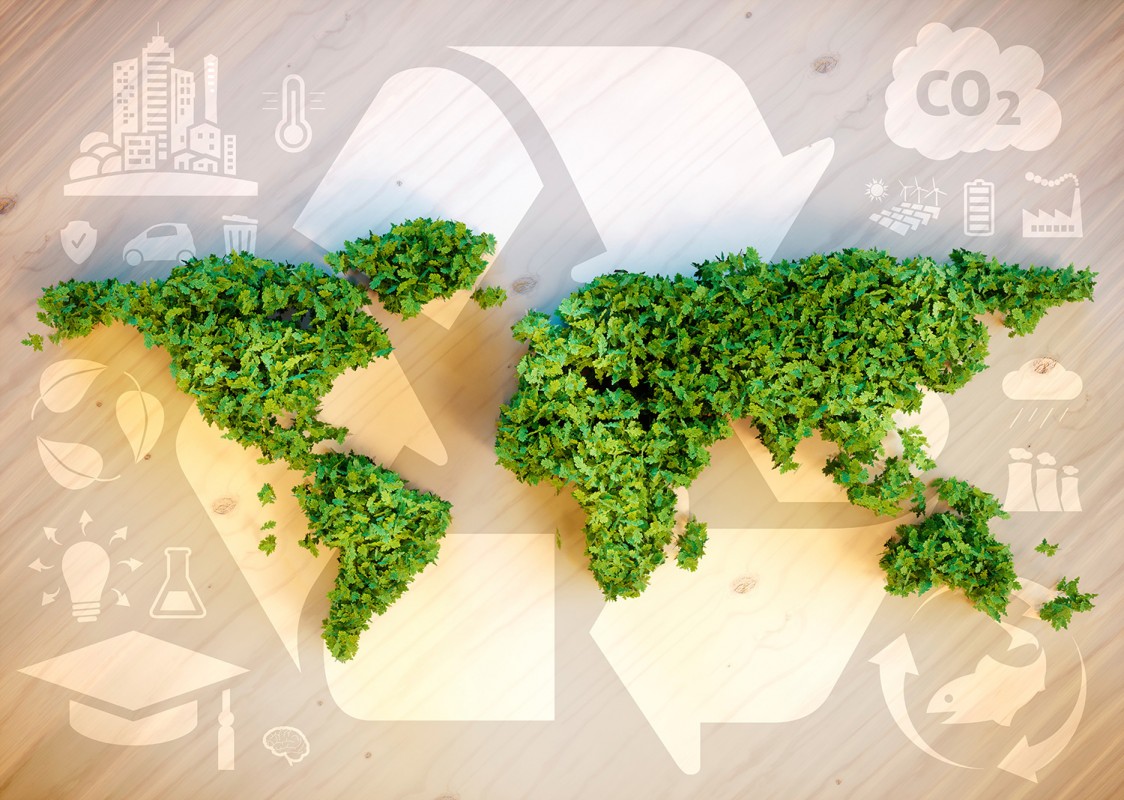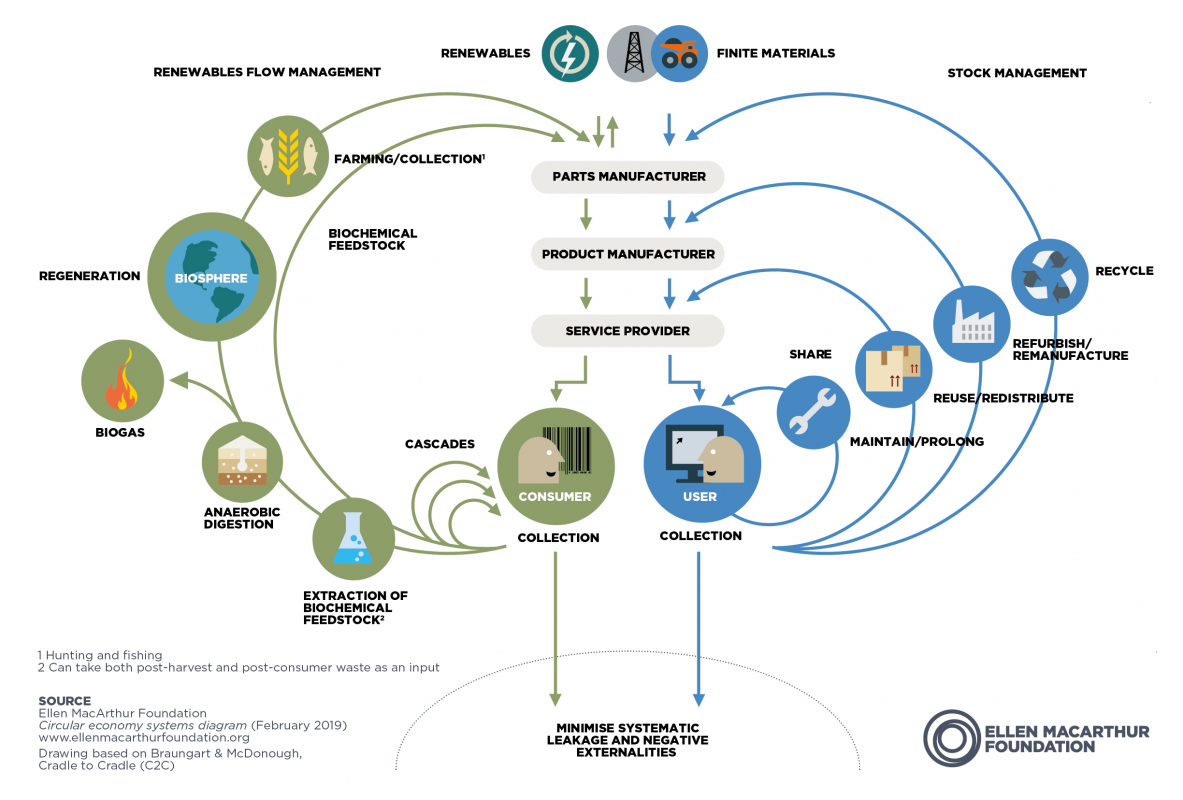 Have you thought about the life cycle of a can of soda or a bag of chips?
Have you thought about the life cycle of a can of soda or a bag of chips?
First, it takes energy to extract the raw materials and transform them into a product. After use, the product is discarded as waste that would most likely end up in landfills.
This cycle of "take-make-waste" is the traditional way that businesses work and has led to high profit and economic growth. This is called a linear economy.
However, this has led to an imbalance between the resources we consume and the natural resources the Earth can provide. If companies continue to use up resources without returning the energy back to Earth, natural material will continue to deplete.
Is there a different way of producing goods that is also friendly to the environment? Many individuals and companies are proposing a "circular" approach. Let's find out more.
A Circular Economy
 Have you noticed how nature is regenerative? When leaves fall from a tree, they become nutrients in the soil for new plants to grow.
Have you noticed how nature is regenerative? When leaves fall from a tree, they become nutrients in the soil for new plants to grow.
The idea of circular economy is to bring this same vision to the products we use and consume. It is an alternate business strategy that revolves around recycling or reusing a product after it’s been discarded. This model is much more environmentally friendly and allows old products to be taken apart and used in producing new material.
According to the Ellen MacArthur Foundation, there are two kinds of loops in a circular economy. The technical loop consists of materials that are not biodegradable, such as your phone. In this cycle, devices or their parts can be repaired, recycled, remanufactured, recycled, and shared. The idea is to keep the technical products in the economy for as long as possible.
The second is the biological loop. Biowaste such as food waste can be reused in farming or as feedstock, composted, or used for generating biogas. A cotton t-shirt once disposed of can be reused as a pillow stuffing or made into other products.
What Are Companies Doing?
In order for large changes in the production line to take place, the raw material producers, manufacturers, and customers must work together.
Pepsi, a food company, is working to become eco-friendly. By working with the farmers that grow the material that Pepsi uses in its food products, they can reduce carbon emissions, water usage, and use renewable energy to process the food. Creating a bio-degradable, or even edible wrapper for food would greatly reduce the amount of waste produced by just one bag of chips, and it would also become easier for the consumer to dispose of it without creating actual waste.
Toys are every child's delight but they go out of favor as children outgrow them. There are several toy companies that buy used toys, refurbish, and resell them. Others are making toy parts out of recycled cardboard, plastic bottles, and cartons that can be assembled by children into different shapes.
A move towards a circular economy, as you can see, is a win-win for everyone, including our planet!
Sources: NY Times, EllenMacArthurFoundation.org






